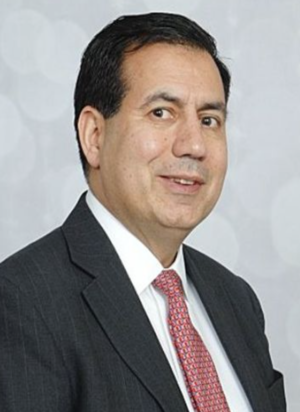Suite Talk: Dr. Ron Adelman, president of the Connecticut State Medical Society

On Oct. 13, Dr. Ron Adelman was inaugurated as president of the Connecticut State Medical Society. Adelman is a professor and the director of the Retina and Macula Center at the Yale University School of Medicine and the scientific director of the European VitreoRetinal Society.
In this edition of Suite Talk, Business Journal Senior Enterprise Editor Phil Hall speaks with Adelman on his new leadership role.
Congratulations on becoming president of the Connecticut, Connecticut State Medical Society. Why is this role important for you?
This is a role where you can help not only physicians, but also patients. Our goal is to enhance the practice of medicine and also enhance public health for the people of our state. The Connecticut State Medical Society supports both patients and physicians in that endeavor to make it a healthier society, to make it a more prosperous society and a happier society.
What are your immediate priorities in your role as president?
We have multiple goals. One of the things is to enhance the public health of our state by promoting good health practices such as vaccinations, talking against the social determinants that affect the quality of health of our people, and representing the view of physicians to our legislators, which would help us to have a healthier society and a better environment for practice of medicine and health care in our state.
I am looking forward to talking with our medical students and physicians in training. We have over 1,200 medical students in our state and over 3,000 physicians in training. I am trying to reach out to them because we want to include them and incorporate their views.
In many parts of the country, there are concerns about a shortage of physicians. Is Connecticut one of those states that’s going to have a shortage or will we have the physicians that we need?
We have shortages in certain fields and certain areas, and we actually have a shortage overall. By having a good number of providers, we could provide better health care because sometimes patients are affected by a shortage of physicians ”“ they get short visit times. And if you have more physicians, we can elevate the quality of patient care and quality of health care.
Connecticut has seen an increasing number of urgent care centers in recent years, but many of them don’t have physicians providing the medical care ”“ they have physician assistants, nurse practitioners and licensed practicing nurses. Is it a problem that people who go into urgent care are not necessarily being treated by physicians?
We advocate for the highest quality of care for the patients ”“ and if it is possible for patients to see the expert in their field, that would be the best situation. However, we understand there are situations where it is not possible to have an expert.
How has Connecticut emerged from the Covid crisis compared with other states?
Overall, Connecticut has done very well. Our vaccination rate is among the highest in the country. When other parts of the country were going through significant peaks, we didn’t peak as much. However, Covid is a challenge nationwide and it’s something that we need to continue to work on.
What is the Society doing to bring down the cost of health care in the state?
Preventive measures are very important. If you have a good preventive measure and good public health, then the cost of health care would decrease.
As an example of that: smoking increases the cost of health care because so many diseases happen as a result of smoking. Vaccination prevents a lot of diseases. So those are very cost-effective ways of decreasing the diseases and decreasing the cost of health care.
Also, providing quality care is important in decreasing the cost because if something is done right, it will be done once and it will effectively take care of the issue.
What encouragement can you give to young people who might be considering careers in the medical field today?
They would be making a difference in people’s lives. They come to help people at a time where they are in significant need and they can relieve people.
There is a joy in helping and curing people who are suffering, and it’s a rewarding field. Because of it, every day that a physician goes to work he or she feels that they”™re making a difference for society.